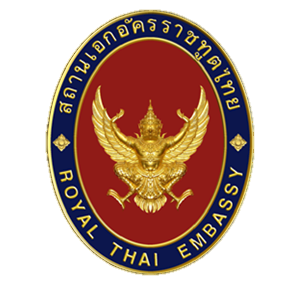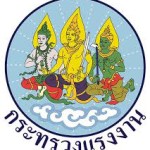
Press Release
H.E. Mr. Petipong Pungbun Na Ayudhya , Minister of Agriculture and Cooperatives reveals at the Press Conference held at the Centara Grand Hotel, Ladprao, Bangkok on January 14, 2015 regarding the New Fisheries Act and Thailand Roadmap on Eliminating an IUU Fishing. He reveals that in recent years , the fisheries industries in Thailand have rapidly expanded as a result of an increase in demand for fisheries resources from the world population growth. Meanwhile, the fishing areas are limited and the fishing gear types are used with overcapacity , causing a competition in natural resources.
A part of reason is due to the fact that the 1947 provisions are out of date, and not efficient to cope with the current situations. Under the Fisheries act (1947), fisheries management aims only to manage in particular inland fisheries and has very few marine fisheries development. No provisions regulates aquaculture practices as there is an abundance of natural resources for capture. Therefore, a revision has launched to draft the new Fisheries Act since 2542 (1999 ).There were several meetings held for consultation of stakeholders and many proposals to the Government. At the end, this draft was proposed to the National Legislation Assembly and was accepted the draft framework on 31 October 2557 (2014).The Standing Committee was established to consider and report to the National Legislation Assembly again and finally, the National Legislation Committee accepted the draft at the meeting on 9 January 2015.
This draft had substantial revisions which covers:.
1. Fisheries Management Scheme
To reform fisheries management, its new law designates fishing areas into 3 zones.
(1) inland fisheries zone covering all inland waters within land boundaries
(2) coastal fisheries zone for the small-scale fisheries covering marine areas extend to 3 nautical miles from the shoreline and to a limit not exceeding 12 nautical miles in accordance with Minister ‘s authority
(3) marine fisheries zone for the large-scale commercial fisheries covering areas adjacent to the coastal fisheries zone and extend to outer limits of Thai waters. A purpose to categorize fisheries zones is to specific the carrying capacity of the catches by fishermen and the fishing gear types in order not to increase a conflict between the fishermen groups due to a decreasing rate of fisheries resources.
In addition, to include a provision which forbids a procession of destructive fishing gear types that undermine aquatic species. In the case where a competent authority found an offence, he can arrest an offender/offenders immediately. Difference from the previous under the 1947 Fisheries Act which authorize a competent authority to arrest an offender/offenders only while doing a fishing. A surveillance will cost a lot of budget. The new Act highlights a key revision is to effectively improve a monitoring, control and surveillance system (MCS) on fishing activities operations.
This draft authorizes the Minister to issue a notification which laid down the terms, methods and conditions requiring a person who engage in fisheries sectors to implement. As now the problems posed by IUU fishing are widely occurred , the Government of States concerned have taken cooperative action against IUU Fishing. A legislation concerned should be flexible and specified measures in addressing IUU fishing immediately An example of draft text is a mandated VMS measure for the large scale fishing vessels which will help the competent authorities to inspect fishing activities and verify an information. Besides, the Minister also has the power to stipulate other criteria for any person who engage in fisheries sectors to implement such as, port-in & port-out measures prior to and after entering ports of the overseas fishing vessels that facilitates a competent authority to inspect an authorization in accordance with the law which including forced labor or human
2. Public Participation
This draft has a provision which encouraging public participation in many levels as follows
– at a national level , the National Fishery Committee is established to designate a development of national fisheries policy with the Prime Minister as
a Chairman. Relevant specialists may be included in a Steering Committee of any fields.
– at a province level , the provincial committee are established to propose a policy or legal measures which will be approved before issuing a notification to in line with different needs of each areas by the Minister. Moreover , to encourage
a local community to register as a representative of the provincial committee .
The new Act also designates a new concept of a competent authority assistance to promote public participation of local community to preserve their natural resources.
3. Encouraging aquaculture and aquatic animals health (sanitary measures)
The new Act specifies the aquaculture and the sanitary standards both in voluntary and mandatory standards in order to emphasize that the aquatic animal and fish products must have a good quality and a safety for consumers and have
a potential competition to export at world market. Sanitary measures are now widely used as a non- tariff barriers (NTB) in trade. This new provision will help Ministry of Agriculture and Cooperatives to supervise the quality and the aquaculture and the sanitary standards for aquatic animals.
4. Port State Measures These provisions are based on the responsibility and commitments of Thailand as a member of Indian Ocean Tuna Commission or IOTC and therefore an essential elements of port state controls are put in place in order for the foreign fishing vessels on IUU vessel list in compliance with all these measures which covers:
– Designated ports for landing
– Prior notification and authorization to enter ports in Thai waters
– Inspection the documentations, fishing vessels and products concerned
– A sanction for infringement – a fine of 1 million to 30 million baht
5. Measures to control Oversea Fisheries
There are presently fishing activities of Thai fishing vessels in 2 areas:
in foreign waters with a valid license and in high seas areas beyond national jurisdiction of any States . These two types of fishing activities required by this draft act to have a valid license by the Department of Fisheries. A sanction for infringement is a fine not exceeding 1 million baht. The licensees must carried out fishing activities operations in a manner consistent with the rules in national and international waters, the rules issued by the organizations (RFMOs) and are subjected to a punishment under the rules of these areas. And are subjected to a punishment under Thai law by provoking the license and listing on IUU black list if that vessel entering into internal Thai waters.
In case where that vessel is authorized to fish in high seas and carried out fishing activities operations in contravene with the rules of RFMOs , that vessel is subjected to a fine of 1 million to 30 million baht if that vessels entering in ports of Thai waters. Thailand as a flag state will therefore have put in place a new control system including a mandated provision of VMS to ensure that overseas Thai fishing vessels must complies with a law.
In conclusion, Minister of Agriculture and Cooperatives announces that the new Fisheries Act shall come into force after the expiration of sixty days from the date of its publication in the Government Gazette. Expecting an adoption on an early April 2015 which means that a process to issue a subordinate legislation is urgently required. However, an amendment of Fisheries Act is a metaphor as a great history of the fisheries law reform Ministry of Agriculture and Cooperatives hopes that “this new law” will be an answer or an important mechanism to help the fisheries problems in Fisheries sectors, including as a part to help in developing and making a progress in the fisheries sectors.
Public Relations Units
15 January 2015
translated by Legal Affairs Divisions



